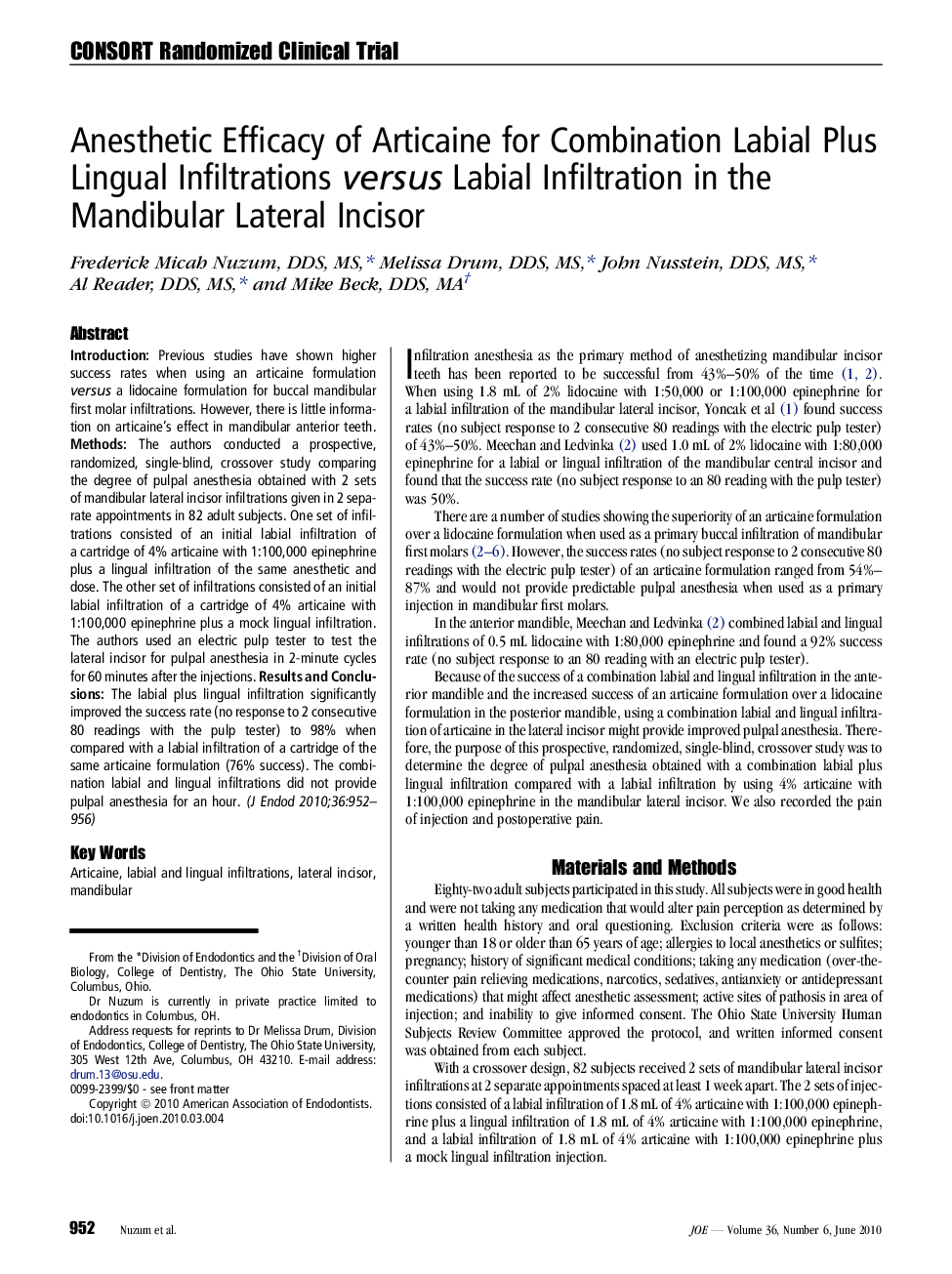| کد مقاله | کد نشریه | سال انتشار | مقاله انگلیسی | نسخه تمام متن |
|---|---|---|---|---|
| 3150590 | 1197553 | 2010 | 5 صفحه PDF | دانلود رایگان |

IntroductionPrevious studies have shown higher success rates when using an articaine formulation versus a lidocaine formulation for buccal mandibular first molar infiltrations. However, there is little information on articaine's effect in mandibular anterior teeth.MethodsThe authors conducted a prospective, randomized, single-blind, crossover study comparing the degree of pulpal anesthesia obtained with 2 sets of mandibular lateral incisor infiltrations given in 2 separate appointments in 82 adult subjects. One set of infiltrations consisted of an initial labial infiltration of a cartridge of 4% articaine with 1:100,000 epinephrine plus a lingual infiltration of the same anesthetic and dose. The other set of infiltrations consisted of an initial labial infiltration of a cartridge of 4% articaine with 1:100,000 epinephrine plus a mock lingual infiltration. The authors used an electric pulp tester to test the lateral incisor for pulpal anesthesia in 2-minute cycles for 60 minutes after the injections.Results and ConclusionsThe labial plus lingual infiltration significantly improved the success rate (no response to 2 consecutive 80 readings with the pulp tester) to 98% when compared with a labial infiltration of a cartridge of the same articaine formulation (76% success). The combination labial and lingual infiltrations did not provide pulpal anesthesia for an hour.
Journal: Journal of Endodontics - Volume 36, Issue 6, June 2010, Pages 952–956